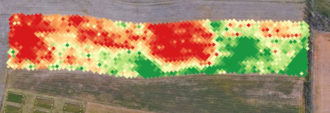Crop growth depends on available nitrogen (N) in the soil, much of which comes from mineralization of soil organic matter and other organic residues, such as cover crops. The amount of mineralized N available to a crop depends on several biological and environmental factors such as temperature, moisture, soil texture, the total quantity of organic matter, and the carbon to nitrogen (C:N) ratio of that organic matter.
Because of these factors, mineralized N can vary greatly across different locations and crop management scenarios. Predicting the amount of N mineralization that will occur in any given scenario may allow farmers to make more efficient use of N fertilizer inputs, improving profitability and reducing the environmental cost of excess N fertilization.
This fact sheet describes the process of developing variable rate N credits for cover crops and soil organic matter.
Related Resource
Website: Nitrogen Recommendations for Corn that Credit Cover Crops and Soil Organic Matter
An online web application that allows users to input information about the cover crops and soil at their site and use the equations to develop an N fertilizer recommendation.
Want more information? See the related SARE grant:
- Crediting cover crops and soil organic matter in a variable rate nitrogen fertilizer prescription (ONE17-307)
This material is based upon work that is supported by the National Institute of Food and Agriculture, U.S. Department of Agriculture through the Sustainable Agriculture Research and Education (SARE) program. Any opinions, findings, conclusions, or recommendations expressed in this publication are those of the author(s) and should not be construed to represent any official USDA or U.S. Government determination or policy.
